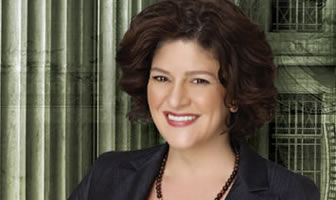Subchapter V is Good for Business
The post below was written by Jeffrey Bast from Bast Amron. Jeffrey is a partner at Bast Amron and will be speaking at our upcoming Business Bankruptcy 101 Chapter 11 Nuts and Bolts Webinar on September 19 & 21, 2023. Most recently, Jeff spoke at our Business Bankruptcy 101: Chapter 11 Nuts and Bolts program in 2020 where he attendees loved him – mentioning that he gave a comprehensive, clear, and practical presentation.
Jeff has been practicing in the insolvency and litigation arena for more than 25 years. He guides business clients through all types of insolvency-related issues including bankruptcy and bankruptcy avoidance, emphasizing corporate reorganization, workouts, and liquidation. He is a frequent speaker and writer both in the U.S. and abroad on topics related to insolvency. Jeff has been recognized by his peers and numerous publications for professional excellence including: Best Lawyers in America, Chambers and Partners, Martindale Hubbell, South Florida Legal Guide, and Florida Super Lawyers.
Thank you for the insight, Jeff!
Subchapter V is Good for Business
July 11, 2023
By: Jeffrey Bast
If you are not a bankruptcy lawyer, read this and if you are a bankruptcy lawyer, you should too. If you represent small businesses, whether in deals or disputes, you should know about a useful tool that is being overlooked by many. It allows small businesses to restructure their debts and emerge with a clean bill of health and ownership intact. I am talking about Subchapter V bankruptcy. It was introduced as part of the Small Business Reorganization Act of 2019, and it came into effect at the end of February 2020. You probably did not even notice. In fairness, we did have a little pandemic just a few weeks later.
Subchapter V bankruptcy basically allows small business owners (with debts of no more than $7.5 million thanks to the CARES Act) to retain control of their business and reorganize their debts through a streamlined process without the burdens of a creditor’s committee or the expenses of monthly US Trustee fees. It is faster and cheaper than a typical chapter 11. This is particularly helpful for small business owners who may not have the resources or time to engage in lengthy creditor negotiations and court proceedings.
The streamlined Sub V process can be completed in a more efficient manner, saving both time and money for the owner. Small business owners can also take advantage of a number of other benefits including, the ability to reduce their debt obligations, sell encumbered assets, and assume or reject burdensome leases and other contracts. These tools can be a lifesaver for business owners facing overwhelming debt obligations, cash flow concerns, or the risk of losing litigation.
The most obvious benefit of Sub V is that it provides small business owners with a vehicle to save their businesses. Many small business owners facing financial distress may feel as though they have no other option but shut down. Perhaps worse, others will put themselves in personal debt, borrowing money, and even mortgaging homes to keep their business afloat. But now you can offer them a lifeline. Subchapter V bankruptcy can allow them to restructure and emerge from bankruptcy with clean balance sheets and more viable entities.
Of course, it’s important to note that Subchapter V bankruptcy is not right for every small business owner. Before deciding to file for bankruptcy, business owners should carefully consider their options and consult with a qualified business bankruptcy attorney. If your client is struggling financially or perhaps they risk losing that major litigation, Subchapter V may assist you in helping them get back on track.
If you’d like to learn more about Subchapter V, Jaime Leggett, also at Bast Amron, will spend a good 90 minutes on this topic at our upcoming Business Bankruptcy 101 Chapter 11 Nuts and Bolts Webinar on September 19 & 21, 2023 (the same one at which Jeff is speaking again).
It promises to be an excellent seminar!


